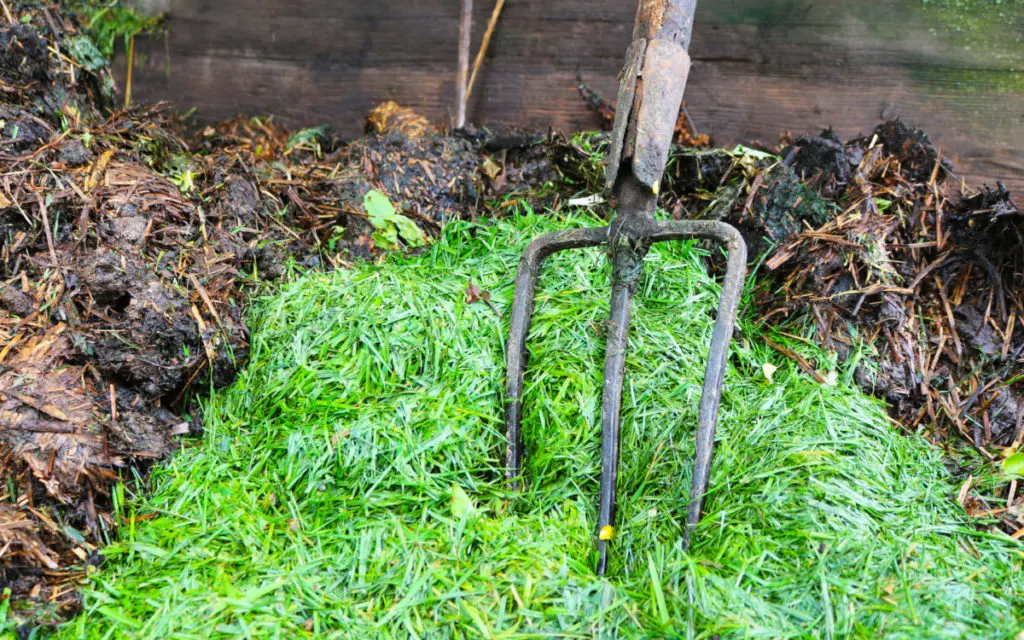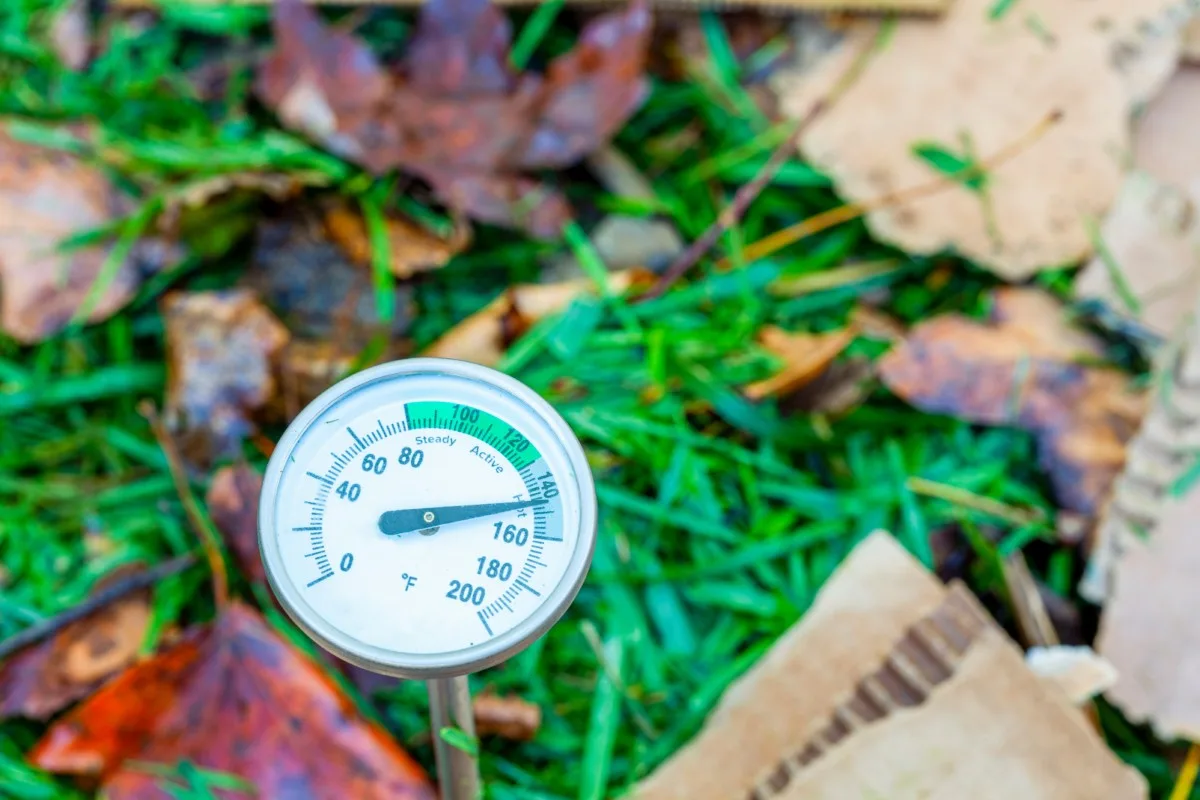
What is compost?
Compost is, in essence, decomposed matter that can be fed to plants.
We’ve found that many people are overwhelmed by the idea of composting and are afraid to mess it up.
We’re here to tell you, that it’s easier than it seems, pretty difficult to mess up, and can even be done in such a lazy way that it takes practically no effort to make beautiful black gold for your garden.
Why should you make compost?
Composting is the perfect way to cut down on the amount of waste you send to landfills, and feed your garden and potted plants in a natural, organic way.
When your kitchen scraps and yard waste goes into trash bags then sent to the landfill, it can take decades to properly decay and return to the earth.
Conversely, if you compost that material, it can return to the earth in just a few months.
Composting not only cuts down on the amount of greenhouse gases and waste you produce, it’s also a perfect fertilizer for your garden. Compost feeds your plants organically, helping them to grow big and strong.
The best part about compost? It’s free! Feeding your plants fertilizer from the garden store can be extremely expensive, but making your own with compost is free.
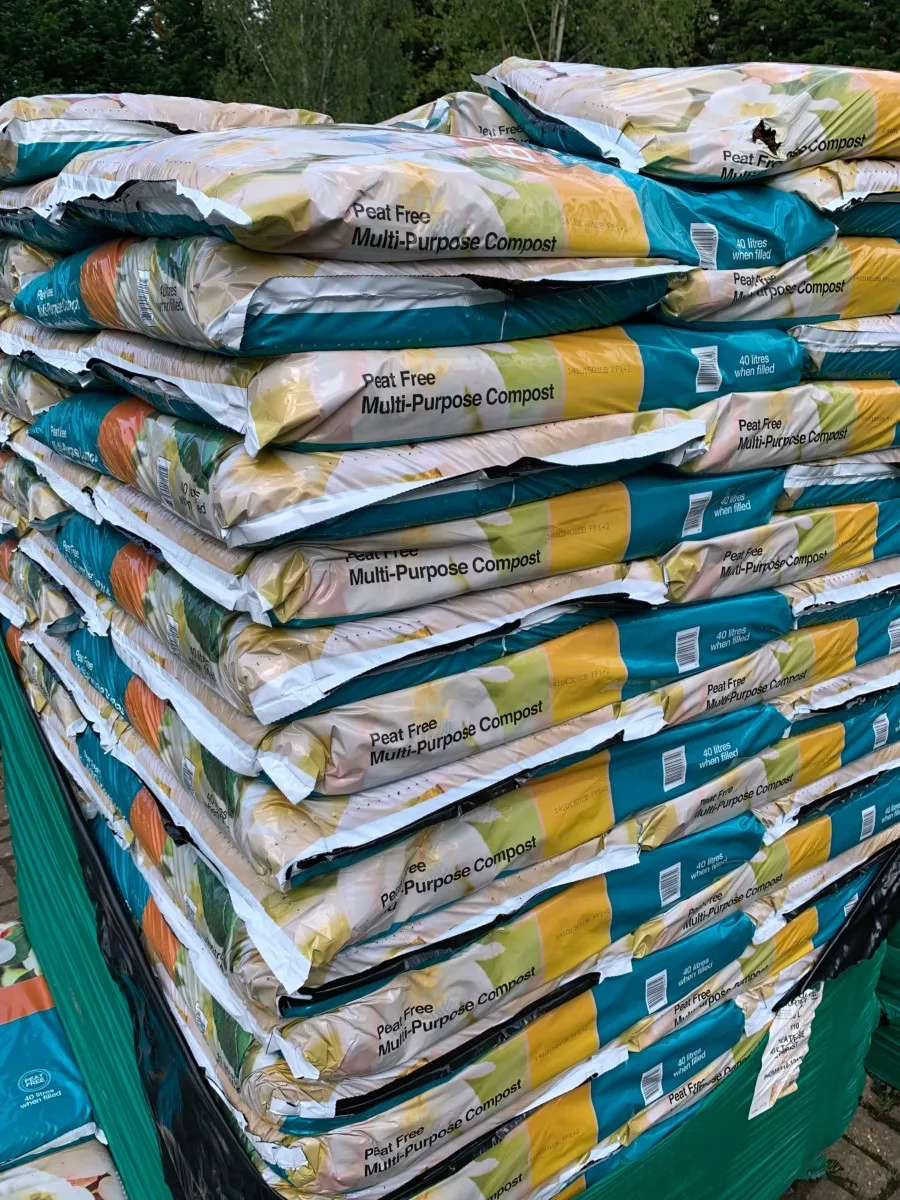
How is compost made?
Compost is made by simply gathering up fresh and dead organic waste and keeping it in the same area until it rots. It’s really that simple!
Compost happens naturally without human intervention every day. Forest floors are filled with decaying organic matter that naturally feeds the trees above.
When you make an intentional compost pile, you can choose what goes in and what stays out. You can also determine how fast or slow your compost pile will break down.
You can encourage the organic matter to break down more quickly by flipping the compost pile every few days, or you can let it do its thing and slowly decompose all on its own.
Where do you make compost?
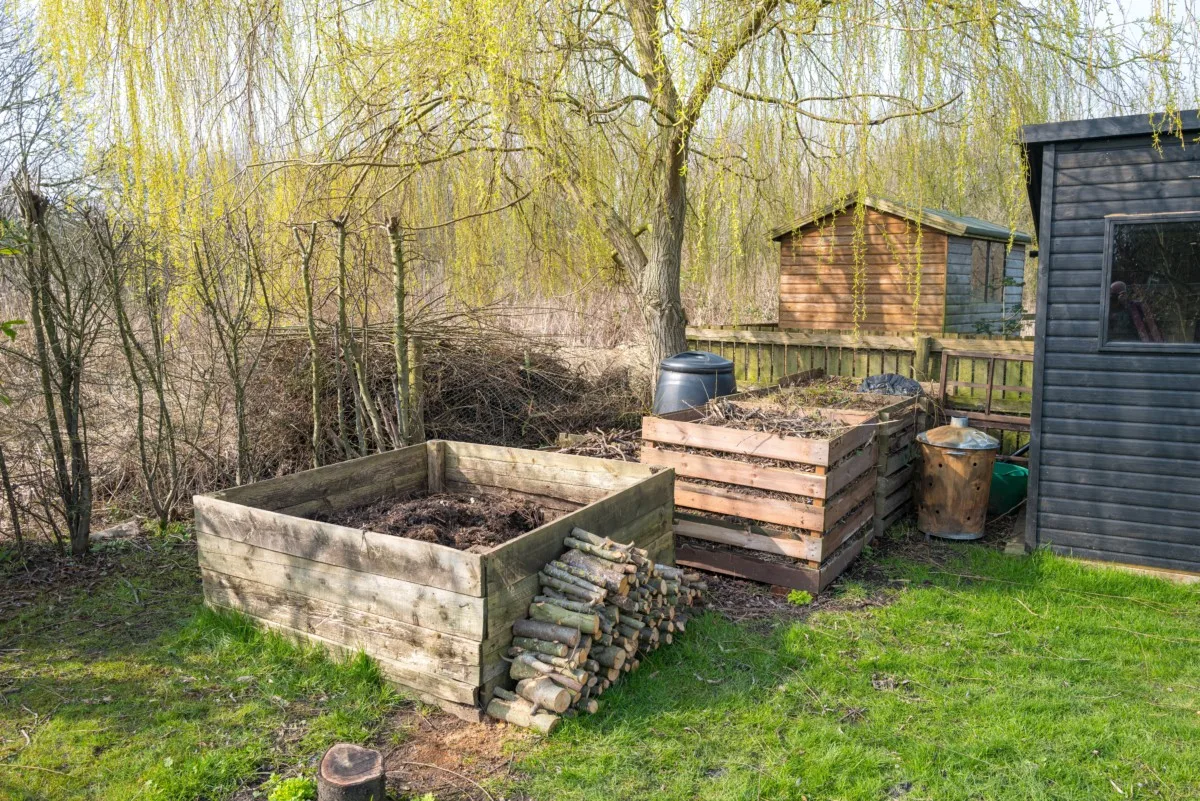
Where you make your compost depends entirely on your living situation. We keep a compost pile right on the ground in the back corner of our yard. Living in the country gives us this luxury, as we’re not likely to hear complaints from neighbors, or have problems with varmints such as rats in the pile.
If you do live in the city or suburbs, you may be better off using a compost tumbler or compost bin. This will keep the pile contained and safe from animals, as well as look nice in your yard.
What do you need to make compost
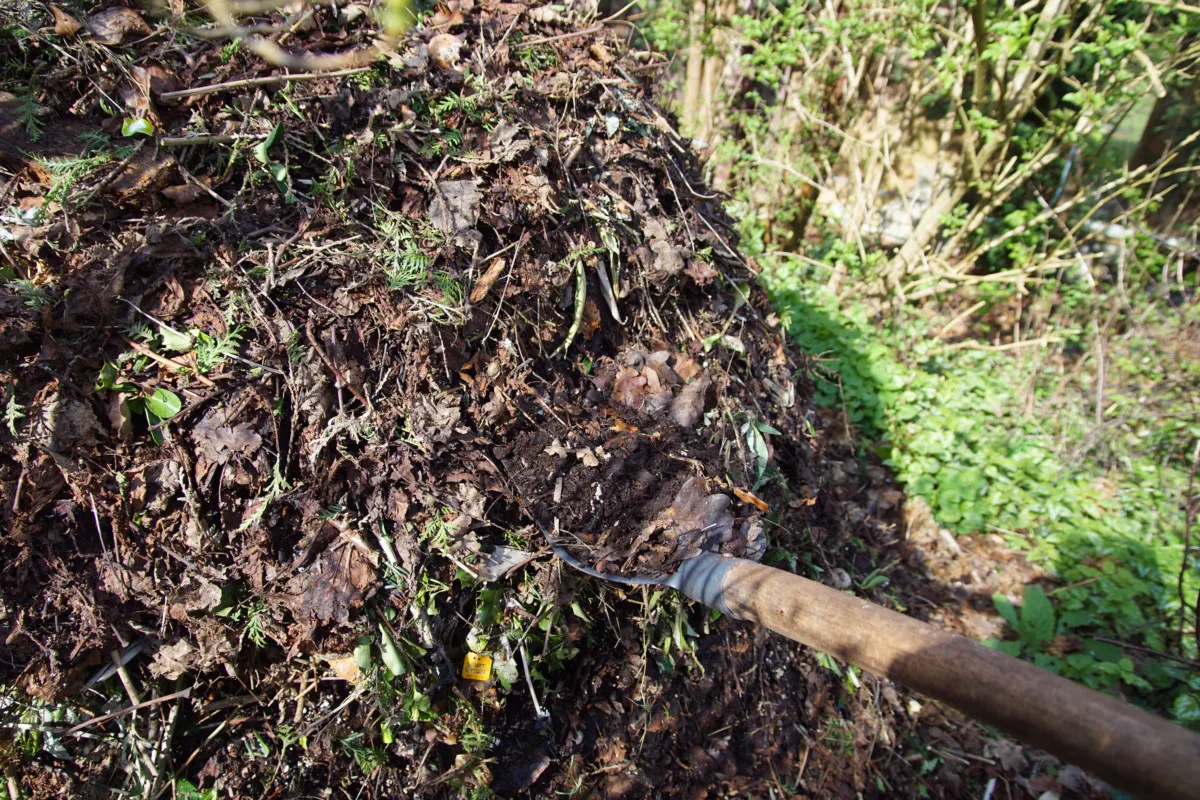
There are four basic components to the perfect compost pile: Water, oxygen, green materials, and brown materials.
These four components work together to break down into the perfect nutritious medley for your garden.
Water
The reason organic materials break down is due to tiny organisms called microbes. Those microbes need water to continue to thrive and break down the matter. Too much water and too little water will both kill those microbes, leading to a pile that doesn’t break down.
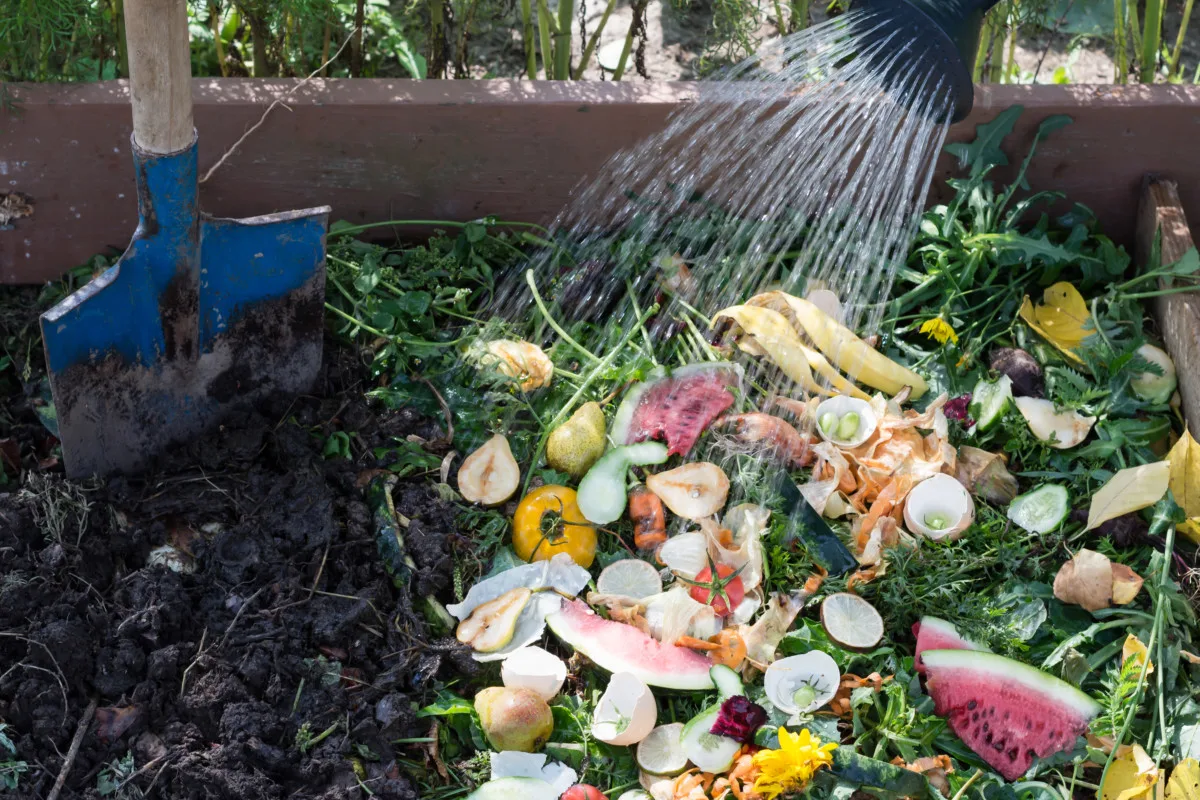
Water is naturally added to a compost pile via green materials as well as rain (for an open compost pile) but if you live in a dry area, you may need to supplement your pile with water from the hose.
A compost pile with the perfect amount of water is spongy to the touch, without any bad smells, or pooling water.
Oxygen
One of the most essential parts of compost is oxygen. The organic matter is broken down by insects and microbes that need oxygen to survive. We suggest weekly flipping of the compost pile to introduce more oxygen and aid in breaking down the matter quicker.
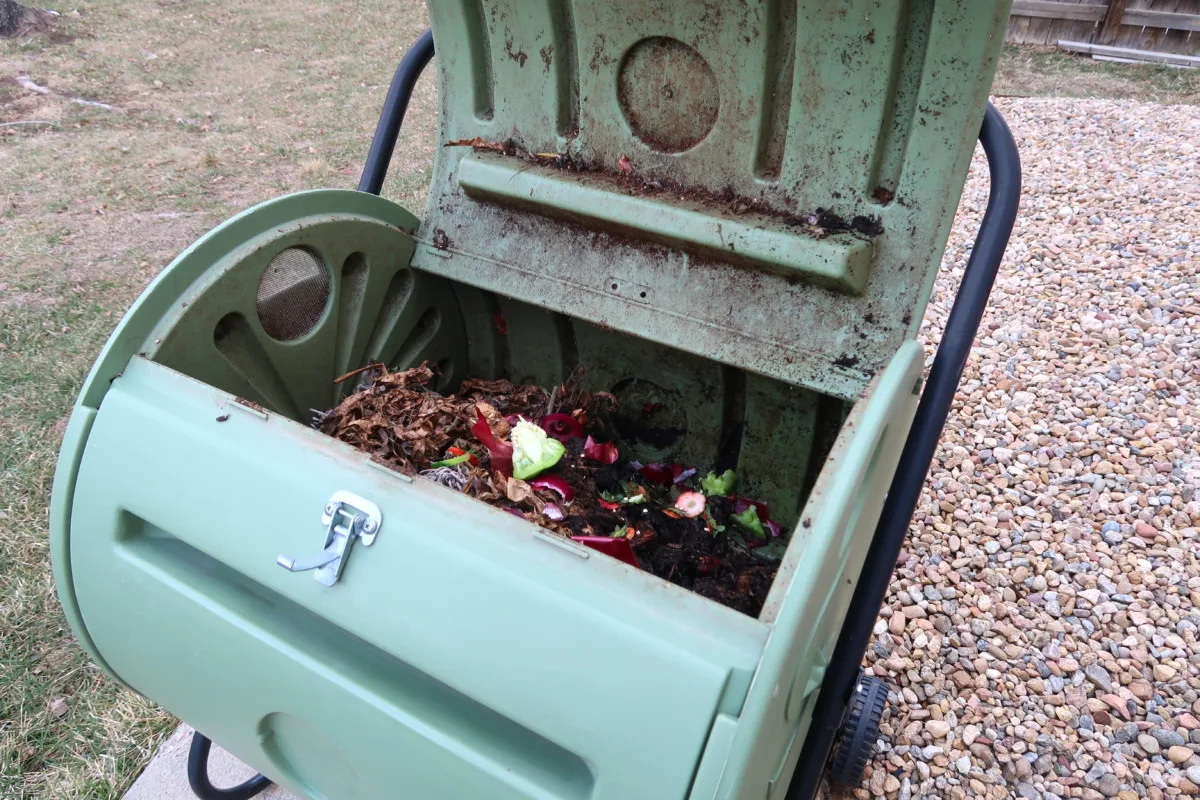
Compost tumblers make this easy, as you only have to turn them a few times to get that much needed oxygen in. If you’re utilizing a compost heap or pile on the ground, you can use a pitchfork or shovel to turn the pile over, so everything on the bottom is now on top.
Many people utilize a two-part compost pile for this purpose. One side is always full, and one side is always empty. When turning the pile, shovel all the material into the empty side. Then next time you turn it, put all the material back onto the other side. This system makes for easy turning!
Green Materials
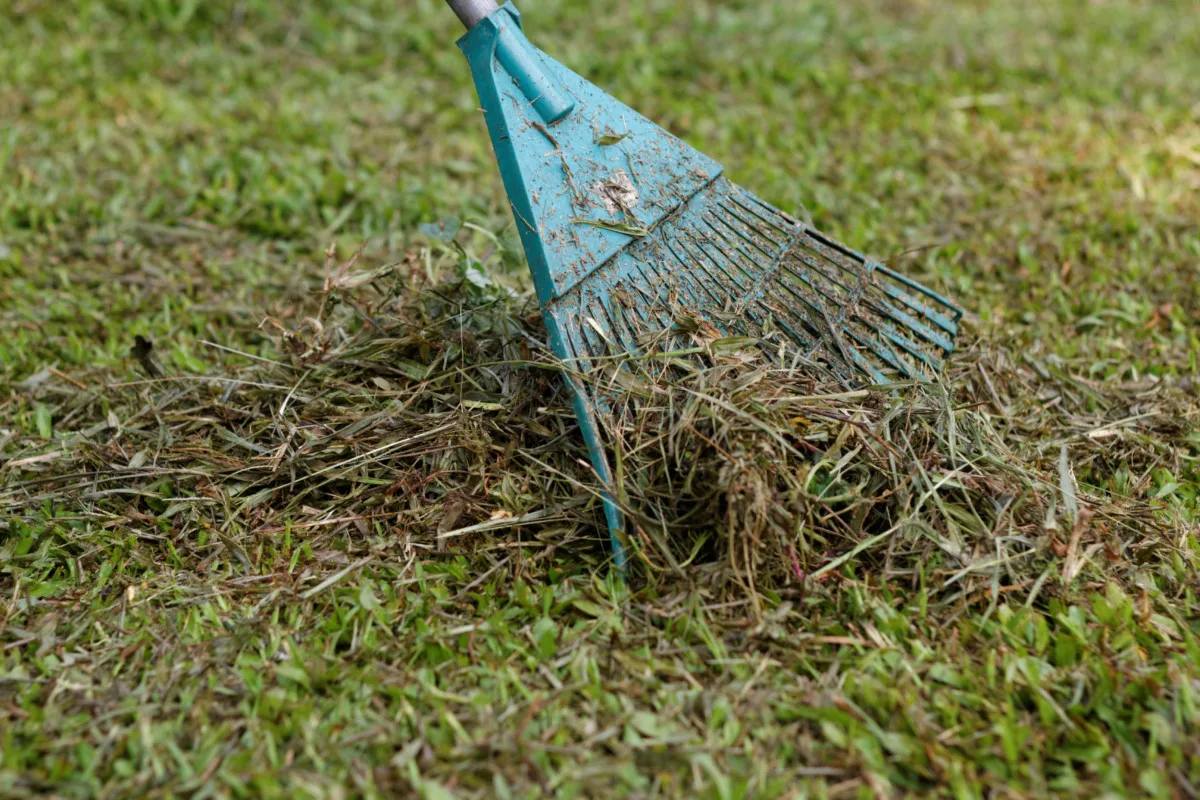
For the perfect compost pile, you’ll need one part ‘green’ to two parts ‘brown.’ Green materials are those that are rich in nitrogen. Green materials are usually wet, have been freshly cut- like grass or plants, or were recently living, like most kitchen scraps.
Examples of green materials are freshly cut grass clippings, kitchen scraps like veggie and fruit peels, weeds from the garden, and manure from livestock.
Brown Materials
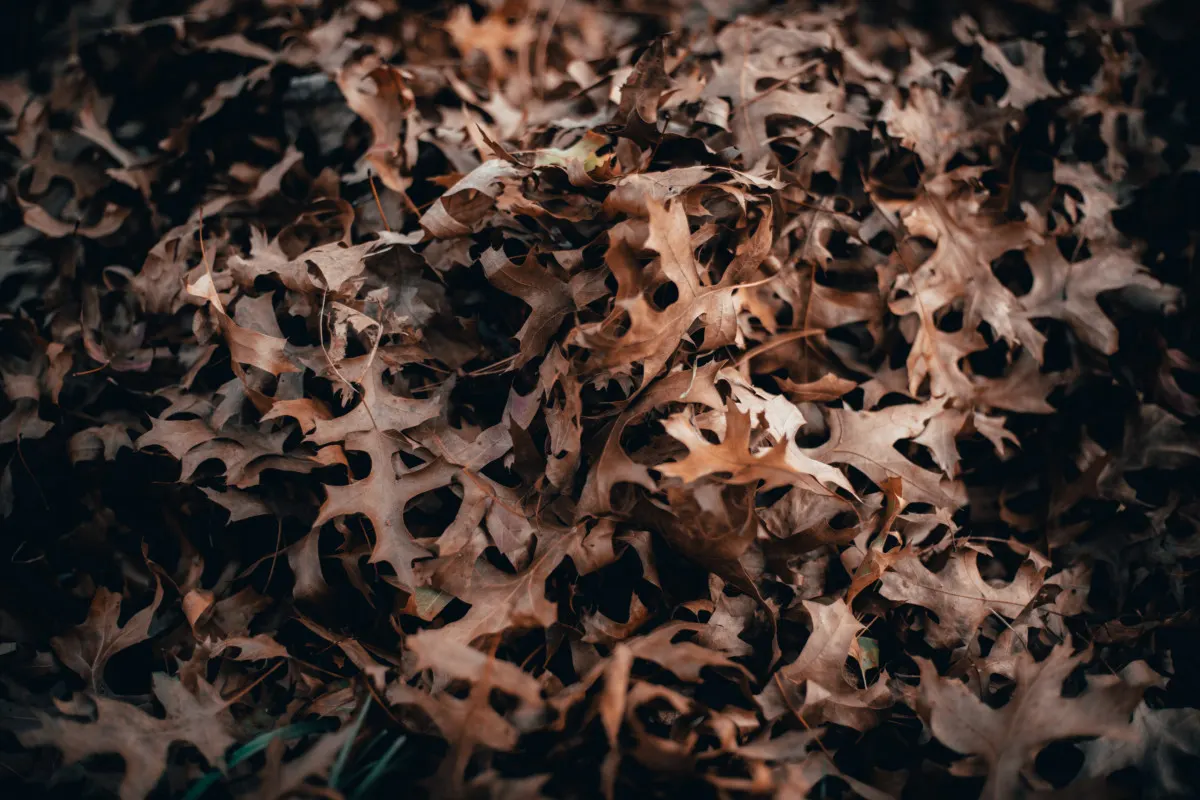
For every one part green materials, you’ll need to add two parts brown. Brown materials are those that are rich in carbon. Think of brown materials as dead plant material. It tends to be dry instead of the living green materials which tend to be wet.
Examples of brown materials are dead leaves, straw, wood shavings and sawdust, paper and cardboard, pine needles that have browned, and fibers like cotton and wool.
Things to put in your compost pile
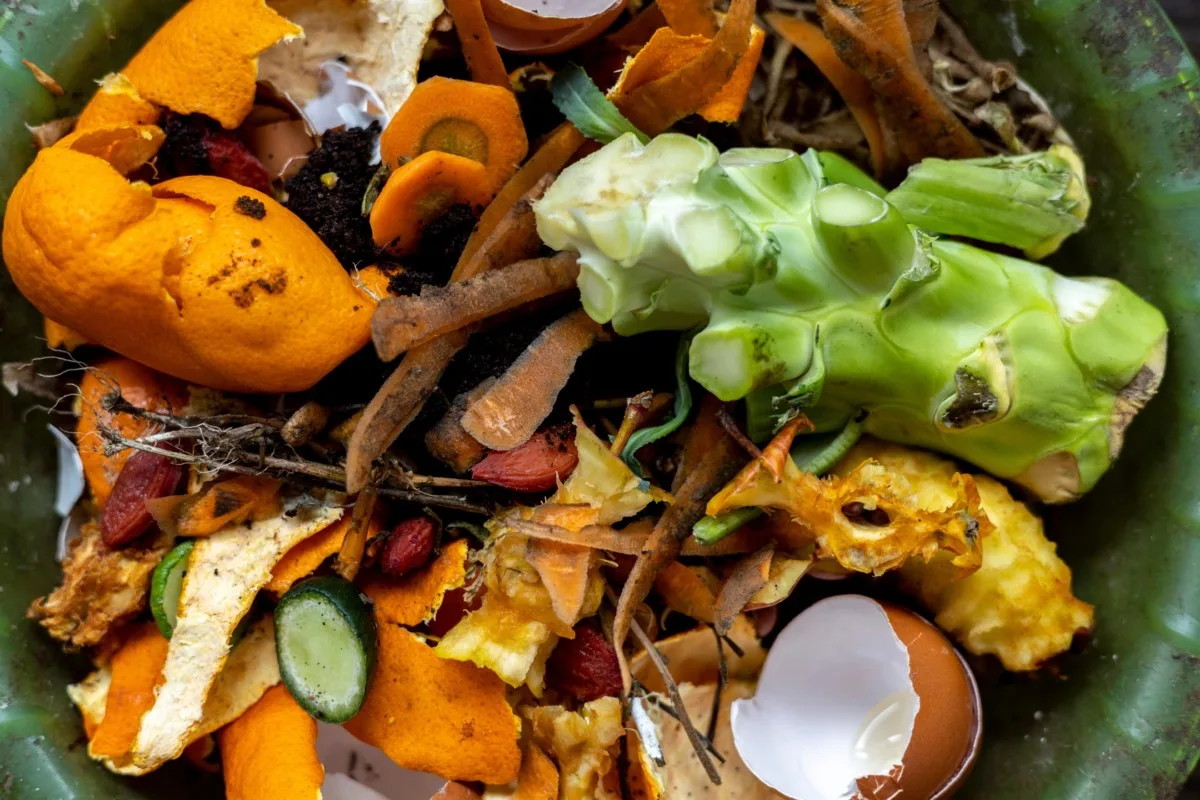
- Animal Hair
- Apple Cores
- Avocado Pits/Peels
- Banana Peels
- Beer
- Bread
- Cantaloupe Rinds
- Cardboard- boxes, toilet paper rolls – just be sure it isn’t waxy, covered in tape, or have plastic on it!
- Coffee Filters
- Coffee Grounds
- Compostable utensils and cups
- Corn Stalks
- Cotton- clothing (shredded), swabs and pads, cotton balls
- Dead Leaves
- Dryer Lint
- Dust and Dirt from the vacuum
- Eggshells
- Feathers
- Flowers
- Fresh Leaves
- Herbs
- Homebrew leftovers
- Human Hair from hair cuts or hair brushes
- Livestock Bedding
- Manure from livestock- rabbits, cows, horses, sheep, goats, chickens, etc.
- Oats and oatmeal
- Paper
- Paper Towels and Napkins
- Pasta
- Pine Needles- both fresh and dead
- Popcorn- popped and kernels
- Pumpkins/Jack-o-Lanters from Halloween
- Rice
- Sawdust (use sparingly in the compost pile)
- Newspaper (shredded)
- Nut Shells (except walnut)
- Rags
- Seaweed
- Spices
- Tea Bags and Loose Tea
- Toothpicks
- Tree Bark
- Twigs
- Vegetable Scraps
- Wood Ash
- Wool
Related Reading: Can I Compost That? 101 Things You Can & Should Compost
Things to leave out of your compost
- Sawdust or shavings from pressure-treated wood
- Wood ash from commercial fire logs
- Paper that contains plastic- examples: envelopes with windows, coated paper, paper with tape on it
- Meat
- Animal Bones
- Dairy Products
- Manure from carnivorous animals- humans, dogs, cats, ferrets, etc.
- Oil
- Fish
- Fatty Foods
- Diseased Plants
- Plants with pests
- Walnuts
Related Reading: 13 Common Things You Really Shouldn’t Compost
Tips on water management
Watering your compost pile is not an exact science and not something you should fret over. However, for your compost pile to break down efficiently, it does need a certain balance of water.
The key is to add just enough water to the compost pile so when you press on it, it feels like a moist, springy sponge.
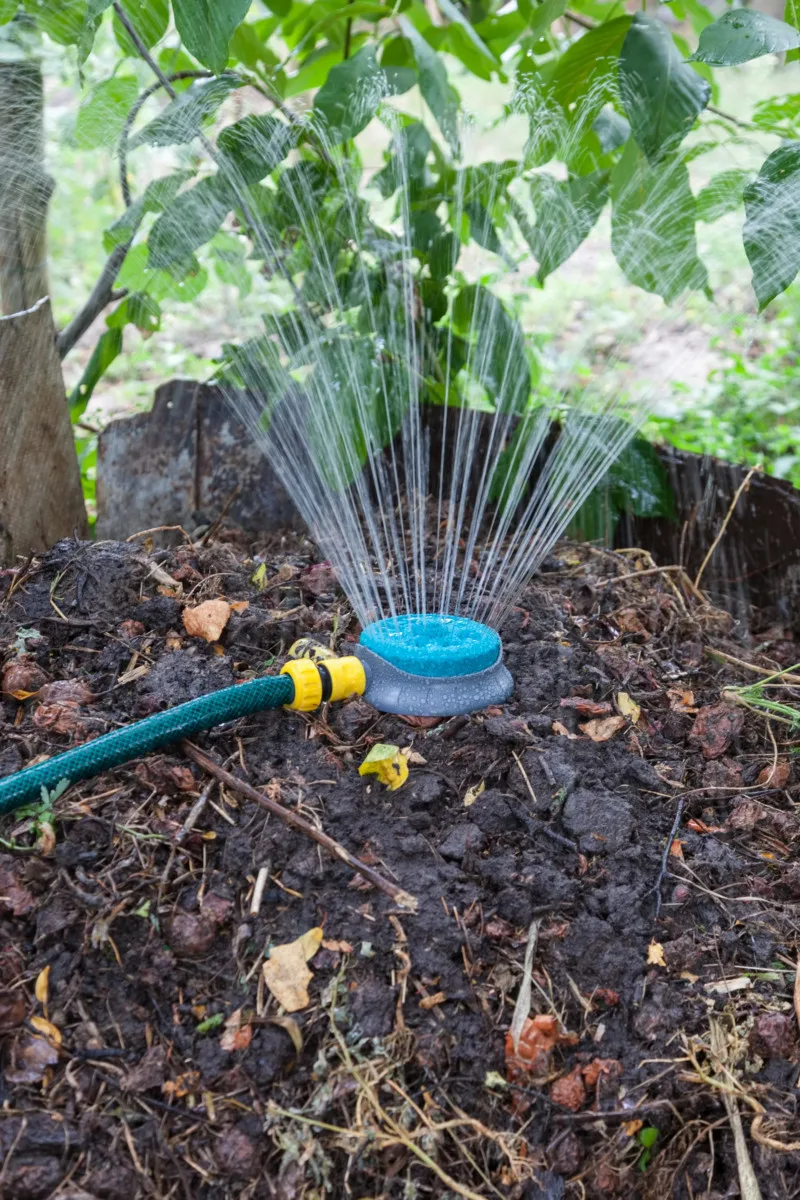
Adding too much water to the pile will result in slow decomposition and can be stinky. If your compost pile is too wet, flip it more frequently to aid in it drying out a bit.
On the other hand, leaving your compost pile too dry will also cause decomposition to slow or stop, as it needs water to break down the material. An easy fix is to add enough water to your pile so it feels spongy again!
Using your finished compost
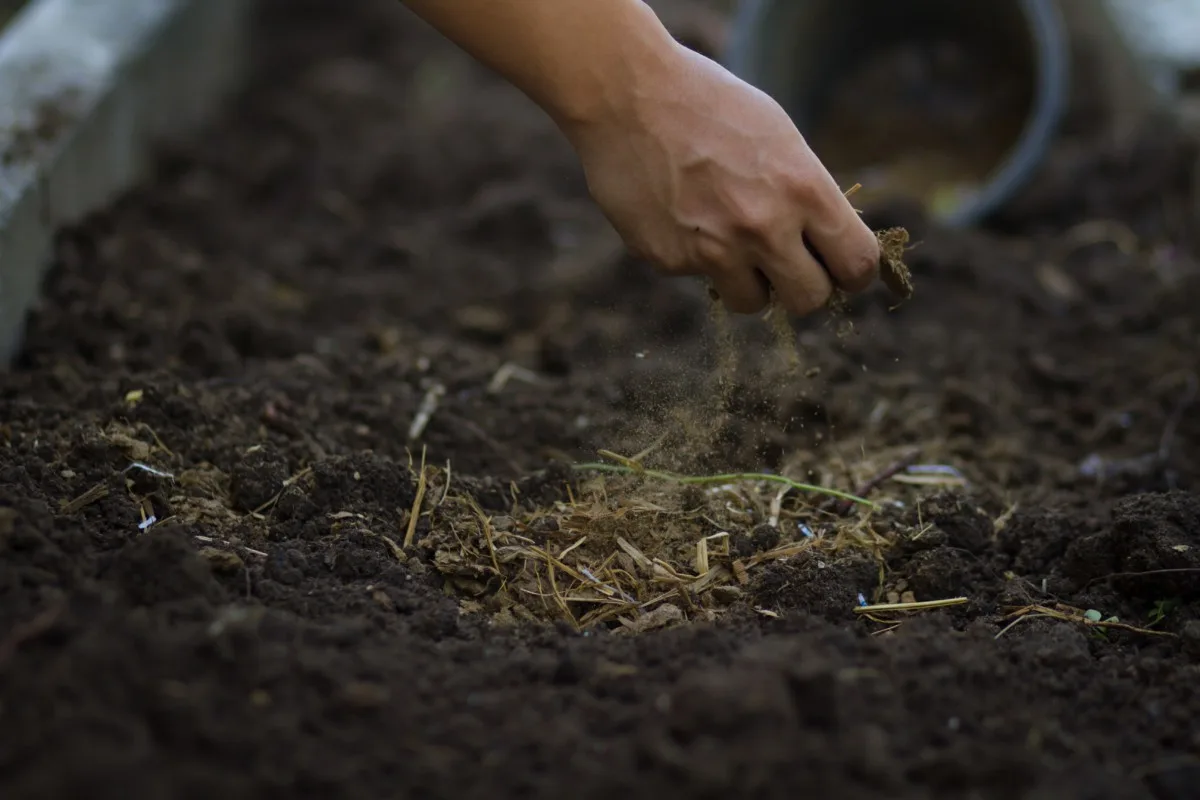
There are plenty of great uses for that finished compost, or black gold as gardeners like to say!
Compost can be tilled into the garden in the spring before planting to give seeds and seedlings a nutrient boost.
It can also be used as a ‘side dressing’ for plants, shrubs, and trees as they mature. To dress your plants, simply put a ring of compost around the base of the plant. As the plant gets water, the compost will slowly work its way into the soil, releasing nutrients to the roots below.
Compost can be mixed into potting soil before planting seeds, seedlings, or transplants in pots. This will give the plants a much needed dose of nutrients while they grow.
You’ll find no matter how much you compost, you’ll never have enough for your gardening needs, so keep making more every season! It’s good for the earth and good for you!
Read Next:

Get the famous Rural Sprout newsletter delivered to your inbox.
Including Sunday ramblings from our editor, Tracey, as well as “What’s Up Wednesday” our roundup of what’s in season and new article updates and alerts.


